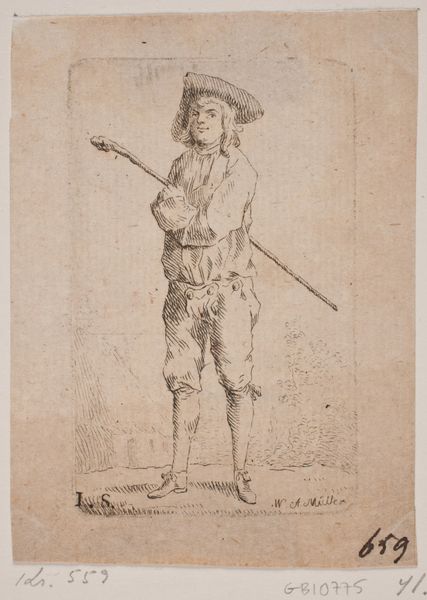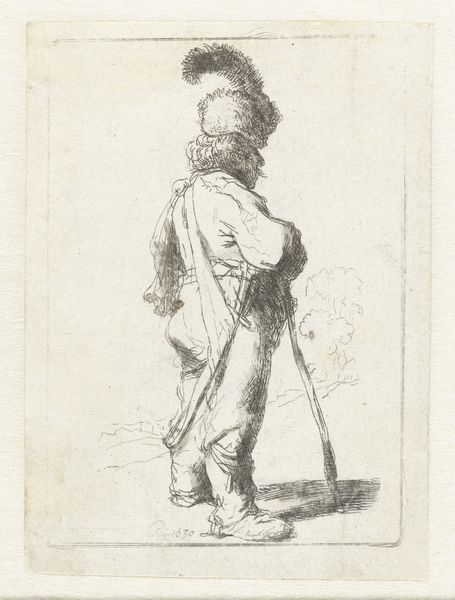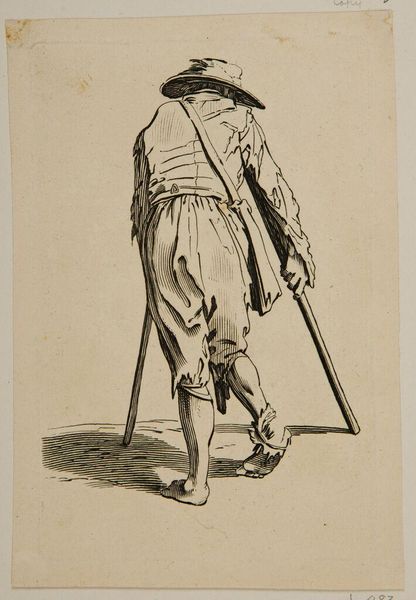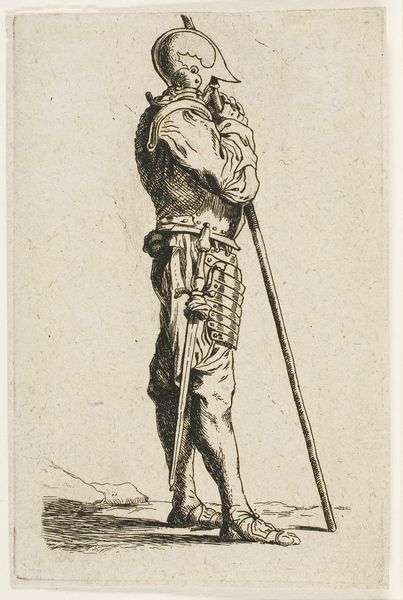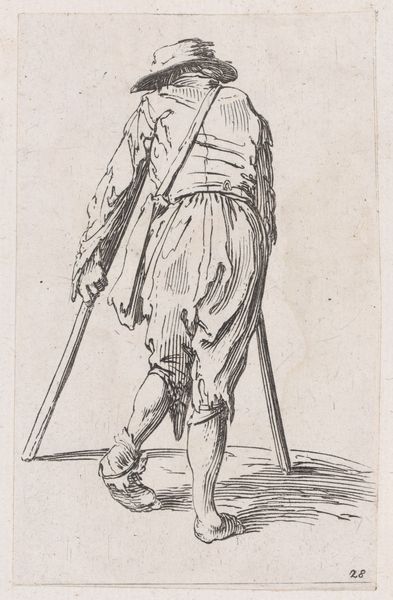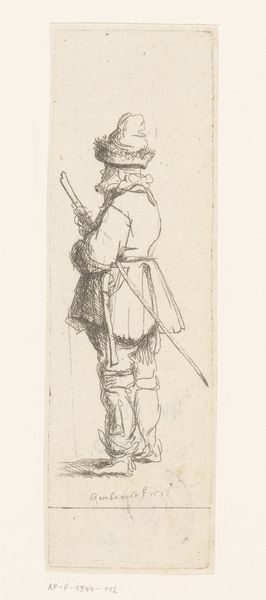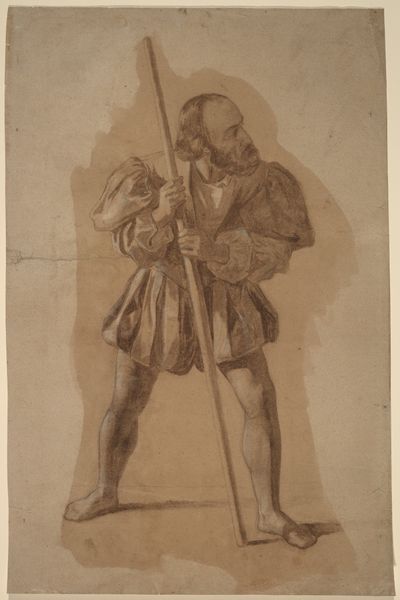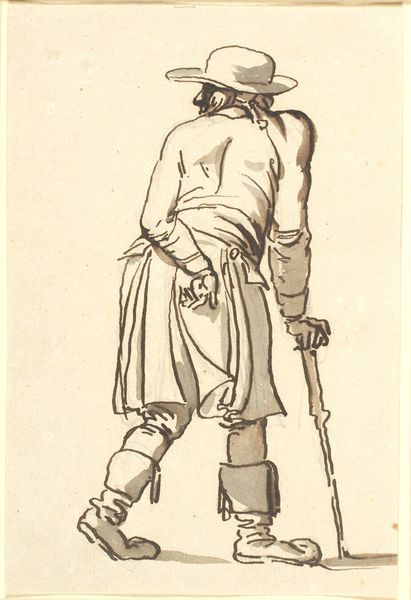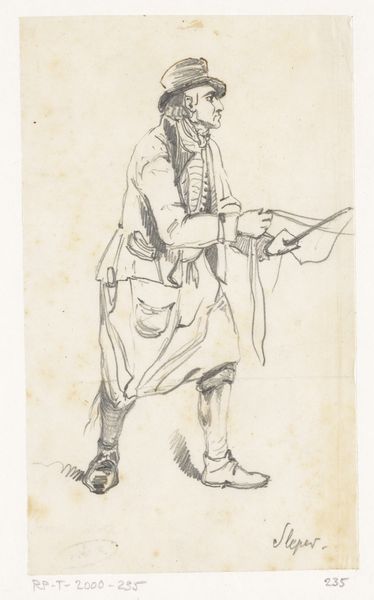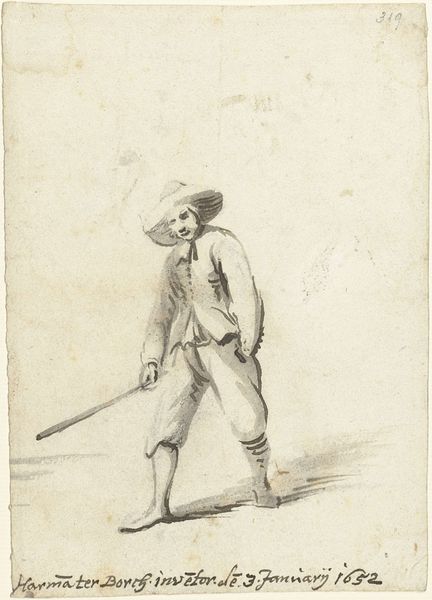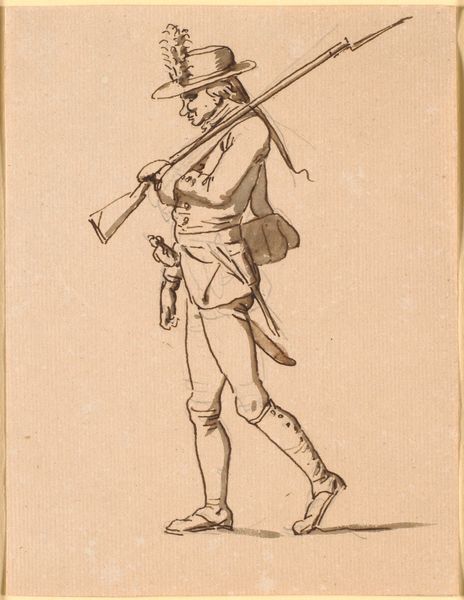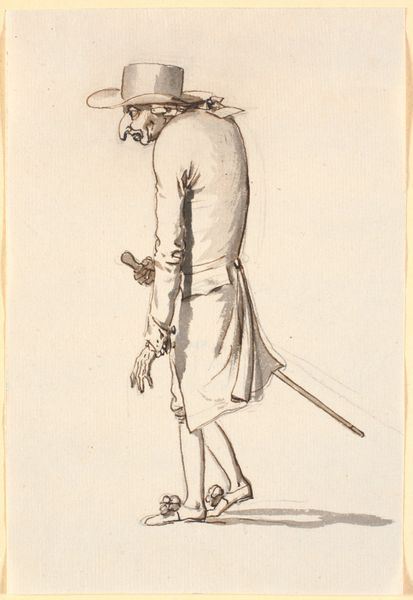
Dimensions: 213 mm (height) x 140 mm (width) (bladmaal)
Editor: We're looking at Nicolai Abildgaard's pencil drawing, "Kodros vandrende bort, set fra ryggen," made between 1743 and 1809. It depicts a figure from behind. I find the sketchiness intriguing; it's so immediate and direct. What stands out to you from a formal perspective? Curator: The dominance of line, undoubtedly. Note how Abildgaard uses hatching and cross-hatching to create a sense of volume and shadow, even in the absence of strong color. The composition is structured by the stark contrast between the defined form of Kodros and the implied, undefined space he occupies. Editor: The figure almost seems to be emerging from the paper, or perhaps dissolving back into it? Curator: Precisely. The figure is meticulously rendered, the folds of the clothing, the musculature of the legs, contrasted to how the head appears to just be fading. This kind of study concentrates on rendering texture. Consider also how the angle, viewed from the rear, encourages a reading focused solely on formal properties—the figure becomes an object of observation and construction. It almost looks architectural to me. Don’t you agree? Editor: I see what you mean. It's like studying a classical building but focused on its planes and its relation to the immediate surroundings rather than its purpose or function. I find it a useful new angle from which to observe such a character. Curator: A successful artwork provides opportunity for a close encounter with materials, to see the artist thinking through line, volume, and space. Editor: This discussion helped me see past the figure and really examine how Abildgaard constructed it from the most basic elements.
Comments
No comments
Be the first to comment and join the conversation on the ultimate creative platform.
